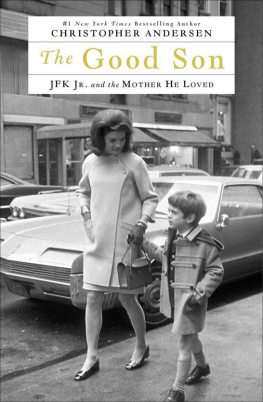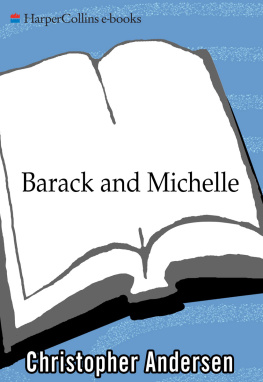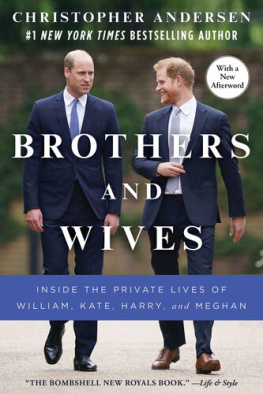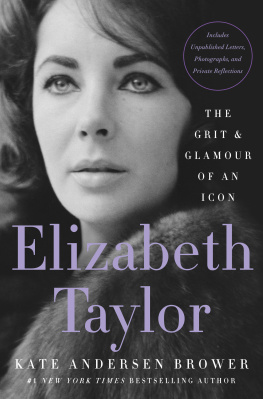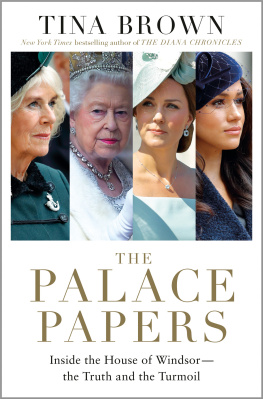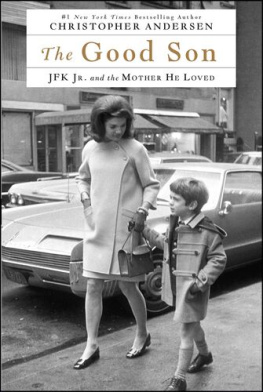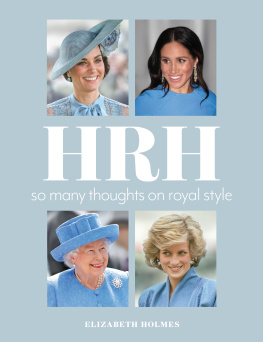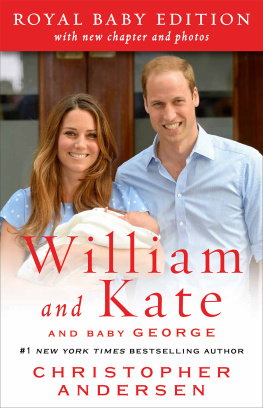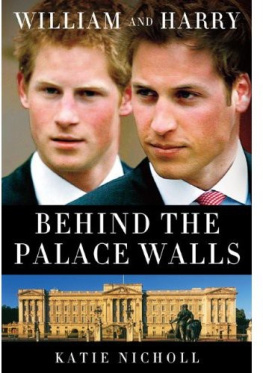Thank you for downloading this Gallery Books eBook.
Join our mailing list and get updates on new releases, deals, bonus content and other great books from Gallery Books and Simon & Schuster.
C LICK H ERE T O S IGN U P
or visit us online to sign up at
eBookNews.SimonandSchuster.com
To my own Royal Family,
especially Queen Valerie
CONTENTS
It is not a cozy relationship and never has been. The family is not set up to be cozy.
MARGARET RHODES, ELIZABETH IIS COUSIN, ON THE RELATIONSHIP BETWEEN CHARLES AND THE QUEEN
Theres a first time for everything.
CAMILLA, AFTER AN ANGRY MOB SHOUTING OFF WITH THEIR HEADS! ATTACKED THE CAR IN WHICH SHE WAS RIDING WITH PRINCE CHARLES
Preface
BLACK QUEEN, WHITE QUEEN
T hey are all straight out of a storybook: the beloved queen trying to hold her family and her realm together; the brooding, philandering, driven heir impatient for the throne; the beautiful, doomed wife; the scheming mistress with ambitions of her own; the upstanding younger prince, and his enchanting young wife and children. These and hundreds of other colorful characters spread out over the centuries have made Britains Royal Family the worlds most riveting, glamorous, critically acclaimed, and longest-running reality show.
Presiding over it all is a woman whose full title is Elizabeth II, by the Grace of God of the United Kingdom of Great Britain and Northern Ireland and of Her Other Realms and Territories Queen, Head of the Commonwealth, Defender of the Faith. Even this grand appellation does not fully describe the spell she casts on her subjects; recent studies show that at least one-third of all Britons regularly dream about the Queen. In many of these dreams, Her Majesty has dropped by for a cup of tea, and merely wants to chat with a normal person about how difficult it is to raise a family as egregiously problematic as hers.
Now, as she celebrates her ninetieth birthday, the woman who is both the oldest and longest-reigning of all British monarchs quietly plans her exit. In his hit play King Charles III , Mike Bartlett imagines a future King Charles refusing to give royal assent to a bill restricting press freedom (difficult to imagine given Charless storied contempt for journalists) and then abruptly dissolving Parliament. A constitutional crisis ensues, there are protests in the streets, and the Duchess of Cambridge hatches a plan that will eventually lead to Charless forced abdication.
While the plot seemed far-fetched at first, Britons were shocked to learn in 2013 that both the Queens and Prince Charless powers were far from merely ceremonial, as had long been believed. In dozens of instances, both the monarch and her heir secretly threatened to withhold royal assenta stamp of approval to legislation that was assumed to be automatically givenas a means of altering bills or vetoing them altogether. Pointing out that the British people had always been led to believe these powers were quaint and sweet, legal scholar John Kirhope said it was clear that the Queen and her son wielded real influence and real power, albeit unaccountable.
Her Majesty, true to form, remained above the fray until the initial furor over the extent of her true powerand more important, that of her decidedly less popular heirsubsided. In times like these the Queen, more than anyone on the planet, embodied the British motto Keep Calm and Carry On.
In the game of chess, no piece is more useful than the queen. It can move horizontally and diagonally, andlike all the pieces on the boardits sole purpose is to protect the king.
And, in some cases, the future king.
NO ONE UNDERSTOOD THIS BETTER than Diana, the rebel Princess of Wales, although she knew she would never be queen. Instead, as the self-proclaimed Queen of Hearts she sought to protect the person she wanted to be Britains next kingher son William. In the process, Diana first gave new luster to the monarchy, and then brought it to its knees. Once the dust had settled, it became clear that, by forcing the Windsors to connect with their people in ways they never had before, she had breathed new life into one of the worlds oldest institutions.
Now, as the era of Elizabeth II draws to a close, there are two queens in waitingeach poised to protect her king. Camilla, the quintessential Black Queen, hid in the shadows for decades, condemned as a scheming adulteress, denounced by the reigning monarch as that wicked, wicked woman, and blamed for the death of her rival, one of the most beloved and admired figures in the world. Biding her time and tending carefully to her image, she gradually salvaged enough of her reputation to secure a place at her princes sideand her future as the next queen.
Young, gracious, smart, and stunning, the White Queen, known familiarly as just plain Kate, captured the worlds imagination even before she could officially lay claim to her royal lovers heart. Although she lacked both the pedigree and the experience of the Black Queen, she also proved to be inordinately patientand a cunning survivor of royal dramas and court intrigue. By marrying her Prince Charming and bearing two heirs, the White Queen cast the fate of the monarchy far into the futureperhaps as far as the next century. Elizabeth II could rest assured that, after a tumultuous four decades that nearly saw the collapse of the royal House of Windsor, the future was assured.
Or was it?
Beneath the surface, tensions mounted as the two queens-in-waiting protected the interests of their kingsthe lackluster, benighted Prince of Wales and his wildly popular sonand their competing courts vied for the love of the people and the power that comes with it. Elizabeth II herself was keenly aware of this delicate and potentially dangerous situation. While allowing the public to believe that she would never retire, the Queen spent months with her most trusted advisors sorting out the constitutional implications of abdication. Nobody knows whether the Queen intends to abdicate, wrote British journalist Neal Ascherson in the New York Times . More accurately, she and a tiny palace circle almost certainly do know, and have no intention of sharing their knowledge.
Yet details of the Queens secret abdication plan have in fact emerged. This meticulously crafted blueprint for transition hinges on one thing: Since Charles has no intention of renouncing his claim to the throne so that William can become the next monarchthe Queen has never even considered this option, according to Palace insidersthe Prince of Wales would have to accept what amounts to a self-imposed term limit on his reign. This would enable William, who along with his wife and children is seen as offering the monarchys best chance for survival into the twenty-second century, to assume the throne before he, too, becomes tired and gray.
The proposed time limit on Charless reign has varied little. In exchange for the Queen agreeing to abdicate either after turning ninety or, more likely, upon the passing of her husband (Prince Philip turns ninety-five on June 10, 2016), Charles has tentatively agreed to stay on the throne for no more than fifteen yearsa reign that would, if it began tomorrow, end when Charles was well into his eighties. William could then be crowned king at a comparatively youthful fifty.
The Queen has not waited until she becomes a widow to share real power with her son. Over the past few years, Elizabeth II has shifted more and more of the monarchs burden to the Prince of Wales, and has made it clear that, in the event that she becomes physically or mentally incapacitated, she wants Charles to wield all the authority of the sovereign as Regent. In the meantime, the Black Queen and the White Queen will continue to be the most dynamic pieces on the royal chess board. Whatever the outcome of this contest, the next Queen of England will be a commonerthe first since Anne Hyde married the future James II in 1659. But in Camillas case, that is merely a technicality. Although she had no title, the Duchess of Cornwall was always a bona fide aristocrata direct descendant of William the Conqueror and the granddaughter of a baron.
Next page

